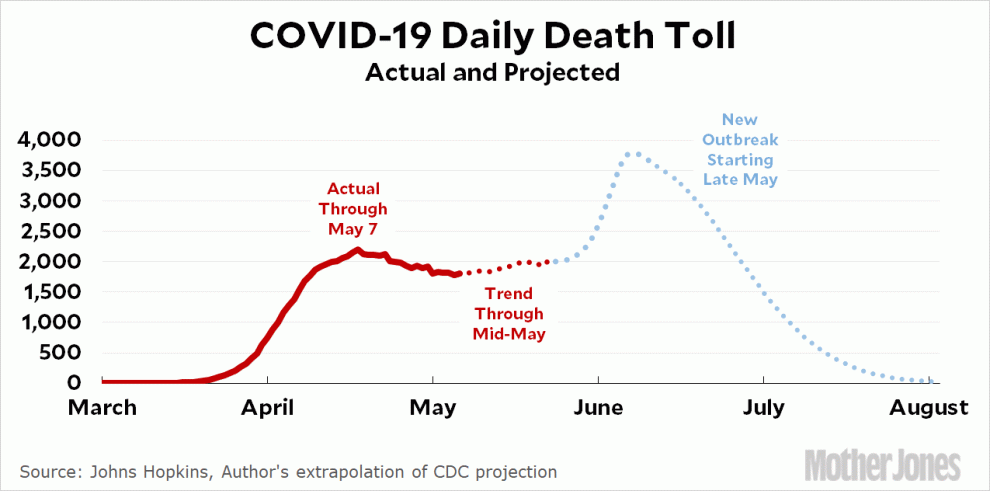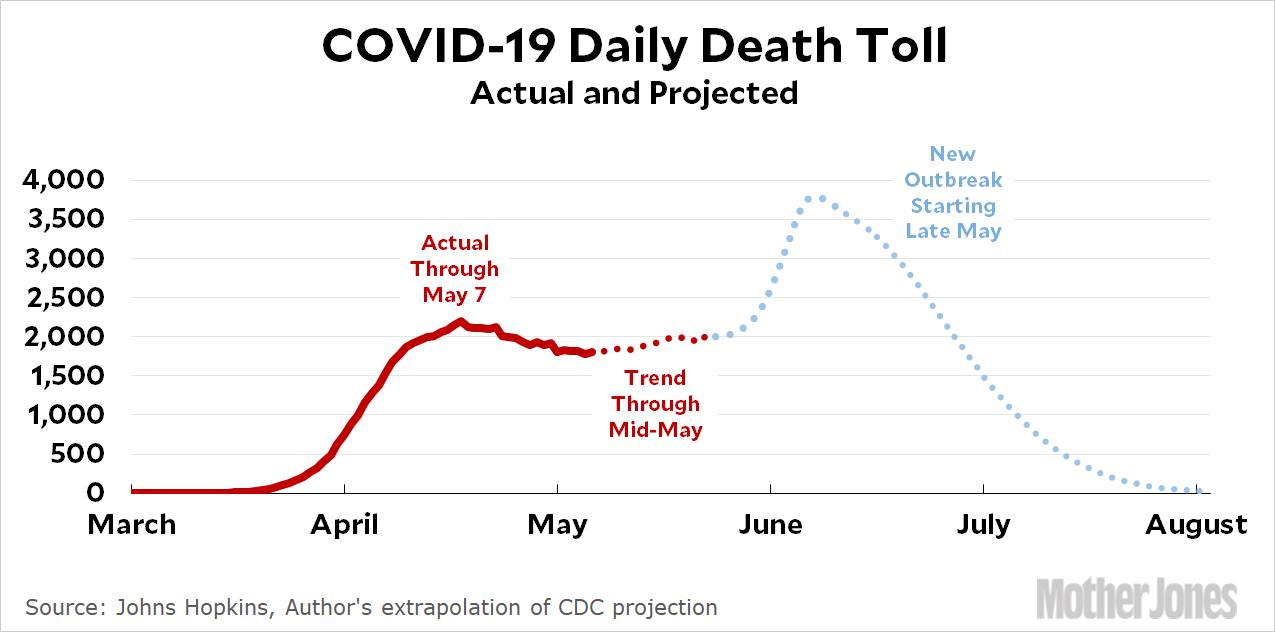
I guess this post is meant to put down a marker of some kind. Those of us who think it’s disastrous to ease up on social distancing this early are working from a mental model that looks like this:
- We started serious countermeasures in mid-March, and deaths peaked about three weeks later. Then we started slowly declining.
- A few days ago some states started to ease up on countermeasures. This will not have a noticeable effect immediately.
- Starting in late May the death toll will start to increase. At first it will be lost in the noise, but by early June it will be obvious that lifting countermeasures was a mistake.
- At that point we’ll panic and put the countermeasures back in place, but it will be too late. For the next two or three weeks we’ll be climbing up a brand new bell curve, which will peak in mid-June.
- If we stay serious about countermeasures, it will then start to decline. But because it’s now at a much higher level, it won’t get down to (near) zero until the start of August.
The chart below is a rough, stylized version of this projection. It’s based on the CDC’s prediction of 3,000 deaths per day by early June, with deaths continuing to increase from there:

This is very approximate, but the important part is that COVID-19 deaths will continue to plateau for another couple of weeks or so. Only after that will they start to seriously climb.
If this is what happens, it means that six weeks of lockdown have been wasted. By late May it will be obvious that we have to do it all over again, and this time the lockdowns will need to be universal and they’ll probably have to last at least two months. Maybe longer. (The decline I show in my chart is just a guess. It could easily be until September or later before we finally get close to zero.)
If the alarmists are wrong, our daily death toll will continue to decline steadily, and we’ll be ready for phase two by mid-June. I doubt this is what will happen, and anyway, phase two is aggressive test-and-trace. We’re not ready for that now, and we won’t be ready by mid-June either, since no one in the federal government seems to care about it. In other words, it’s probably bad news no matter what happens. But it’s way worse news if the CDC/alarmist projection turns out to be right.















